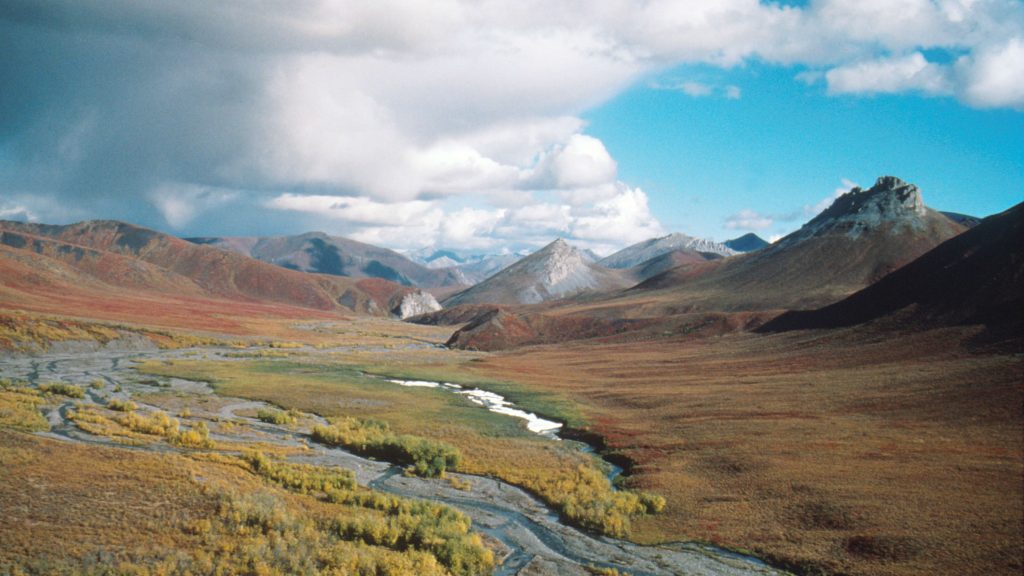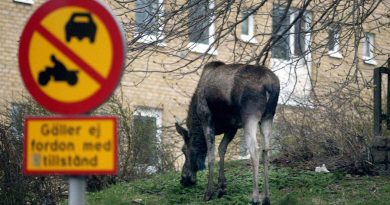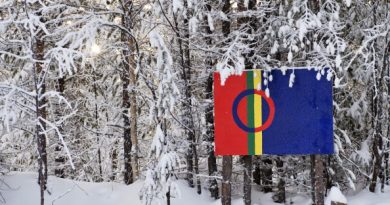Opponents skeptical as U.S. Gov claims seismic survey will have “insignificant” impact in ANWR

The first sign of oil development in Arctic National Wildlife Refuge is likely to be a 3D seismic survey. A company has applied to do the work, and the government has deemed the application complete.
Everything about the proposal to drill in ANWR is controversial. Still, officials from the Bureau of Land Management (BLM) said this week they see no need to do a full environmental impact statement for the seismic work and expect to approve the request in time for work to begin this winter.
Seismic work used to involve dynamite. Now it’s mostly done with vibrating trucks that send shock waves into the ground. Lines of sensors on the surface record the waves that bounce back to map underground formations.
A company called SAExploration wants to bring about a dozen vibrating vehicles to the refuge, each mounted on a rubber track. Several at a time would drive parallel lines across the frozen tundra. They’d stop frequently to lower their vibration plate for about 20 seconds and then move to the next spot. The trucks would drive about eight lines across a typical square mile, according to the company’s application. The plan is to shoot seismic across the entire coastal plain, or 2,600 square miles.
Lesli Ellis-Wouters of the BLM said it’s the same technology that was used west of the refuge, in the National Petroleum Reserve-Alaska.
“We felt that there would be insignificant impact, so we’re planning on doing an environmental assessment and when that is available we’ll post that environmental assessment, with a draft finding of no significant impact,” Ellis-Wouters said.
Is it as harmless as it seems?
An environmental assessment is kind of the junior cousin of a full “environmental impact statement.” It’s less rigorous and less detailed. Wouters said if the BLM learns something unexpected in the assessment, or in the public comment period that follows, it could order a more thorough examination.
“At the end of the 30-day public comment period if we don’t receive substantial input to change our finding of no significant impact, we would issue a decision record, and then the activity could be authorized,” Ellis-Wouters said.
In addition to the vibration trucks, the work will require two mobile camps, each able to house 160 people, and a variety of support vehicles.
Attorney Jason Rylander at Defenders of Wildlife said the activity is far from harmless.

“Seismic has tremendous potential for serious environmental impacts,” Rylander said. “In fact, you can still see the scarring from the last time that seismic was allowed, in only just a small portion of the refuge.”
In the 1980s, Congress allowed a 2D seismic survey on the coastal plain of the refuge, resulting in more than a thousand miles of trails. The U.S. Fish and Wildlife Service says most of the trails recovered well in the first decade but a few miles were still visible from the air decades later. Data collection for a 3D seismic survey is more intensive, with far more sensors.
A threat for polar bears, say opponents
Rylander and other environmentalists say they’re especially worried about the impact seismic work could have on polar bears.
“During denning season it can cause mother polar bears to leave their den,” Rylander said. “It can expose polar bear cubs to disturbance. So we’re very very concerned, considering there’s only 900 or fewer polar bears in the southern Beaufort Sea population.”
That figure, 900 polar bears, is an estimate, and like most everything in the Arctic Refuge, it’s disputed.
The U.S. Fish and Wildlife Service says noise disturbance and passing vehicles have prompted some mother polar bears to abandon their dens while others seem to adjust to industrial noise.
Drilling set to begin next year
The Interior Department hopes to offer leases for drilling in ANWR next year. While it’s responding to the application to conduct seismic work, BLM is also preparing a separate environmental impact statement for the lease sale itself.
Congress last year mandated the lease sale, but Rylander said environmental groups aren’t giving up.
“Whether the Trump administration ultimately issues a lease or not, our aim is to ensure that this land is never drilled,” Rylander said.
BLM expects to hold another public comment period and at least seven public meetings on the lease sale proposal this fall or winter.
Related stories from around the North:
Canada: Canada announces new climate change ambassador, Eye on the Arctic
Finland: Finnish chemistry professor develops “revolutionary” biofuel, Yle News
Norway: Norway grants drilling rights closer to protected Arctic waters, The Independent Barents Observer
Russia: Chinese oil company considers investing in Russian Arctic LNG, The Independent Barents Observer
Sweden: Sweden reluctantly greenlights construction of Nord Stream 2 gas pipeline, Radio Sweden
United States: U.S. Gov quietly allows land survey in Alaskan wildlife refuge, enviro groups furious, Alaska Public Media



